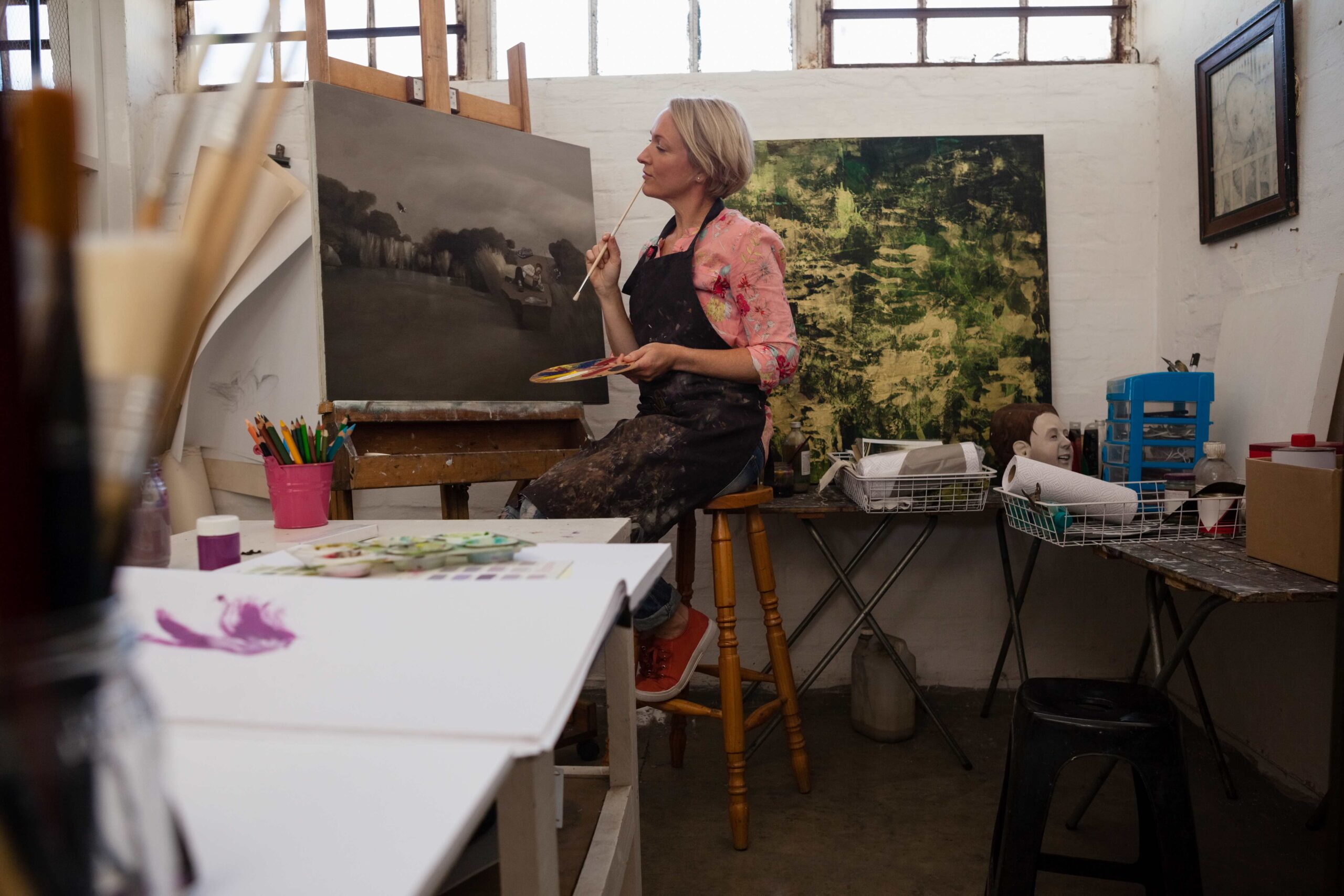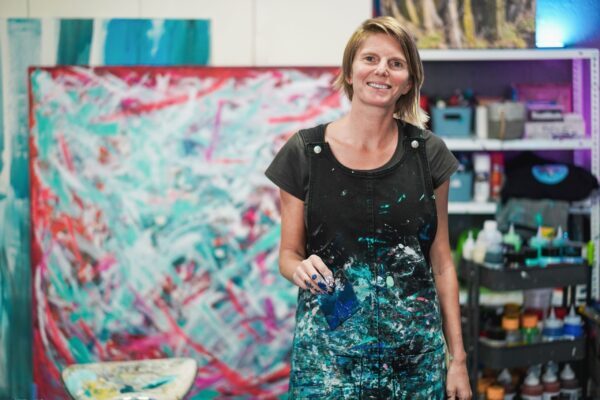The interview is currently unavailable. Below is a detailed biography of the artist. Stay tuned to FigureGround.org — we’ll let you know if the original interview becomes available.
There’s something about how Sharon Butler works that resists being pinned down. Not vague — just slower than expected.
Born in 1959, she grew up moving between Connecticut and New York, eventually settling into the rhythms of East Coast light. Her early work was observational but rarely representational. You might miss the tension at first glance — but it builds.
In the 1990s, Butler taught at the university level and painted mostly at night. One former student remembered how “she never rushed critique — even when the room got quiet.” That quietness stayed in her own work too.
She launched the blog Two Coats of Paint in 2007. At first, it was a simple writing experiment. But slowly — and here the phrase feels earned — it became something else: a living archive of painter-to-painter observation.
And that may be the best way to approach Sharon Butler’s biography — through how she notices.
A Painter Who Writes (or Maybe the Reverse)
“Writing is how I find my edges,” she once wrote — a sentence that reads both literal and metaphorical.
Butler’s blog didn’t just cover painting. It mapped a terrain: reviews, artist interviews, studio visits. Over time, Two Coats of Paint became a major voice in contemporary art blogging, especially for women artists and mid-career painters often overlooked by larger outlets.
One post from 2011, written in the middle of a winter residency, mentions how “the best light for seeing the surface happens around 4:20 PM — just as everything starts to disappear.” That kind of micro-observation — precise, almost useless, and completely memorable — appears both in her writing and on canvas.
She called her visual practice “new casualism” in a 2011 essay, proposing a term to describe painting that embraces imperfection and incompletion. The phrase caught on — for a while. Then it faded.
Or maybe it didn’t. It’s hard to say now. Some concepts don’t vanish — they just get absorbed.
Residencies, Routines, and Things Left Open
By the 2010s, Butler had exhibited across the U.S.: New York, Philadelphia, Connecticut, Los Angeles. Her work shifted — subtly, but unmistakably. Colors stayed muted, but structure grew bolder.
In one 2015 solo show, her canvases were mounted slightly off-center on the walls. A critic noted that “the rooms felt tilted — but only once you’d already spent time in them.”
She’s been a resident artist at Yaddo, the Josef & Anni Albers Foundation, and the Brooklyn Navy Yard, where she documented her studio process with the same precision she gave to brushstrokes.
Midweek mornings — especially in late September — were when she filmed most of her studio footage. One clip, posted without sound, shows a single piece of masking tape being removed, slowly, from raw linen. That’s it. And yet it lingers.
In a 2018 interview, she said: “I’m interested in painting that doesn’t know how it ends. That’s how I know I’m in the right place.”
Some Names Fade. Others Stay in the Wet Paint
You could reduce her career to accolades — grants, residencies, shows. But that would miss the point. Sharon Butler’s contribution is as much about tone as it is about outcome.
She carved a space for slowness. For not-knowing. For letting painting sit inside contradiction — abstraction that feels intimate, writing that reveals process more than conclusion.
More importantly, she did it without branding herself around provocation or persona.
Even now, her Instagram posts — feature not slogans but works-in-progress. She sometimes notes the exact paint brand, the linen weight, or simply, “this one got lost on the way to another.”
That’s her voice. Still building. Sharon Butler’s biography isn’t loud. But it insists — carefully, insistently — that ideas matter most when they’re not forced to declare themselves too soon.

